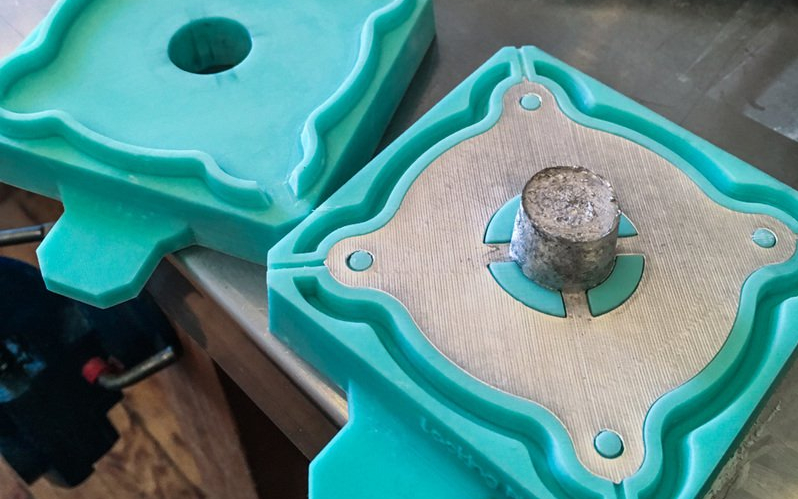Community, Leadership, Experimentation, Diversity, & Education
Pittsburgh Arts, Regional Theatre, New Work, Producing, Copyright, Labor Unions,
New Products, Coping Skills, J-O-Bs...
Theatre industry news, University & School of Drama Announcements, plus occasional course support for
Carnegie Mellon School of Drama Faculty, Staff, Students, and Alumni.
CMU School of Drama
Monday, February 26, 2018
Casting Metal Parts and Silicone Molds from 3D Prints
Hackaday: The invention of the relatively affordable 3D printer for home use has helped bring methods used to produce parts for prototypes, samples, and even manufacturing, closer to designers. This tutorial on how to cast metal parts from 3D printed silicone molds is a perfect example of how useful a 3D printer can be when you are looking to make a custom and durable metal part at home.
Subscribe to:
Post Comments (Atom)

4 comments:
As we mentioned in Sceno-Fab yesterday, this may be the future of props. Once 3D printing gets faster and more reliable, there is a good chance that many props will be made this way. Also, with 3D printing the molds instead of the actual prop, it will make it faster to accurately reproduce copies. You could keep the files saved on a computer and recreated months later without storing the mold. However, I wonder the durability of these products. Often items in shows, objects are not treated the way they would be treated in the real world. I wonder how these molded devices will hold up. In addition, I wonder if there is a application in costume and prosthetic makeup. Having though it is unlikely that you could print directly on to an actors face, it may be possible to print molds for prosthetics or potentially to print prosthetics. I’m excited to see where 3D printing goes and how it evolves and changes theater, especially props and makeup.
I think this is just the beginning of what we, as artists, can do with 3-D printing. The current downside is time and materials. It takes a lot of time to produce something on a 3-D printer and many home based printers are small and can do small parts. While this is intriguing, I really want to see what is happening in the R&D areas of getting 3-D printers to print faster, use less material and become more affordable. Also, what about the environmental impact of creating these molds, or even of 3-D printing? I’ve not seen much in the way of testing or statistics in regards to the materials used in this process. From the technical aspect, it would be great to 3-D print parts of sets but it is time and cost prohibitive at this stage. A prop shop that needs to replicate a 13th century chalice and make 12 of them could use this idea and technology but, not if they are a small organization. This is definitely something to keep an eye on as it grows and I think it would do us well to be active in the development of the machines and materials used in 3-D printing and part of the conversation. If they can keep our fields in their mind as part of the development process, then we could potentially see some great advances for the arts.
It’s so logical to use 3D printing to make molds, but it has never crossed my mind to do that. I’m really impressed with the quality of the mold. I would have thought the 3D printing would be much more striated from the plastic, but I guess we have gotten far enough were desktop printers can get super detail. I also watched the video without reading the article so I was fully ready for just a bunch of casting clips of different things made from 3D printed molds, but the fact that he made an awesome articulating arm for his camera is really cool. It shows the dual nature of 3D printing- one where use use it to create art and the other where you use it to make highly functional things. I’m constantly impressed with the ingenuity of people and how easy the internet makes the communication of these creations.
The future of technology in fabrication has been a passion of mine in the recent years hence why I search out all of the technology articles on here. I really like how this article put into words what I can often find hard to express as to why 3D printing as so many cool future applications when it stats “The invention of the relatively affordable 3D printer for home use has helped bring methods used to produce parts for prototypes, samples, and even manufacturing, closer to designers“ I had honestly not thought of the application of using it to create mound for metal because of the melting temperatures of the materials involved in the fabrication process. It is interesting that there are some 3D printers that can print relatively heat resistant plastics that can be used in some metal molds. But to me the most important aspect of this article is showing that people are thinking of creative ways to incorporate these new tools to their repertoire.
Post a Comment